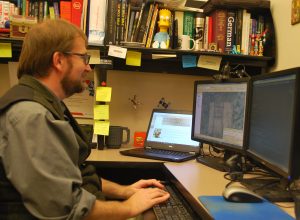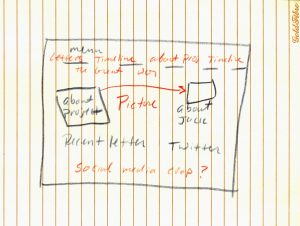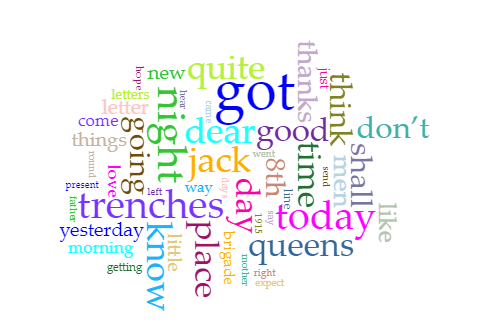By R.C. Miessler
In September #TeamPeirs celebrated our two-year anniversary of going live. As anniversaries are a time for reflection, we thought we would contribute a few pieces on what #TheStaff has taken away from working on Peirs. As we are in the midst of a crowdfunding campaign to get us over to France in March 2018, we thought it might be of interest to our readers to know what its like to work on this project.
When I started working at Gettysburg College in July 2014, I never thought I’d be participating in a Digital Humanities project focused on a British World War I soldier.
While librarians are often trained to be generalists, I mostly consider myself a humanist with some proclivities towards historical thinking. Unfortunately, for much of my life, my knowledge of the Great War was filtered through popular culture and the bits and pieces of various history courses I had taken throughout high school and college. Snoopy going up against the Red Baron on his dog house/Sopwith Camel was perhaps the visual that came to mind the most, along with vague mental references to trenches and the fragility of nationalist politics.

R.C. experimenting with ArcGIS mapping – overlaying a trench map that Peirs carried in his pocket in 1918 with satellite imagery of the present-day area.
Then along came Jack. Or more accurately, Jack’s letters, accompanied by College Archivist Amy Lucadamo and Professor Ian Isherwood.
When approached by Ian and Amy to think about how to build a website that would feature a letter from a World War I soldier 100 years from when it was sent, I was still fairly new to the Digital Humanities, but the concept was intriguing enough to want to be involved. I certainly did not anticipate the level of my engagement, however. I was guessing I would come to a meeting or two, help churn out a quick WordPress site, and fix things when they broke. Instead, I’ve had the opportunity to provide direction to the project and plan for its future. From the start, Ian and Amy have embraced me as an equal on this project, and I’ve never felt that I’ve just been #teampeirs technical support.
The First World Letters of H.J.C. Peirs exemplifies what a Digital Humanities project should be. Digital Humanities is a methodology that thrives with collaboration. Instead of the lone researcher, or a faculty member leading a team of students and staff, all involved in Digital Humanities projects have an equal stake in the work. Being a collaborator on #teampeirs has given me the opportunity to learn different technologies such as mapping and timelines, and in turn, teach those skills to others. And while I will not be going to France in 2018 with the rest of the team, I will be waiting on this side of the pond to help out with whatever they need on the home front.
Beyond sharpening my skills with Digital Humanities tools and methods, my experience with the Peirs project has made me a better student of history. From reading the primary sources written by Jack, to working through histories of the First World War, I’ve gained a greater appreciation for the geopolitical stage in the early 20th century, as well as a healthy dose of existential dread as I see common themes carry over into today. The work done with #teampeirs exemplifies the value of liberal arts education, and it’s why it has become the most successful continuous Digital Humanities project to date at Gettysburg College.
Working with #teampeirs has been invaluable as I grow as a librarian and Digital Humanist, and the work that Ian and Amy have done with the project is impressive, but without Jack, none of it would have been possible. It’s been good to get to know Jack over the last two years through the lens of his letters, written under the immense stress and hardship of one of the most difficult situations anyone could ever face. I can’t help but see a bit of myself in Jack; we share a certain cynicism and reserve, a caring for friends and family, a love of the little things that make our worst days more manageable.
During seminary, I studied the history of the Christian Church, with a focus on the modern ecumenical movement. One of the catalysts for the emergence of ecumenical cooperation was World War I. As the first mechanized war raged, it became apparent that humans were not on a common path for peace, that our evolution as a species did not leave behind the baser instincts to fight and conquer. The recognition of shared belief and mutual humanity was needed to make a better world in the wake of massive tragedy. And, likewise, from the horrors of the Great War, I hope that we have been able to create something great to show the best of human perseverance and courage. The collaboration of students, faculty, archivists, and librarians, this #teampeirs, from disparate backgrounds to create this Digital Humanities project has been a highlight of my career at Gettysburg College, and I feel honored to have been part of the success of the First World War Letters of H.J.C. Peirs.


